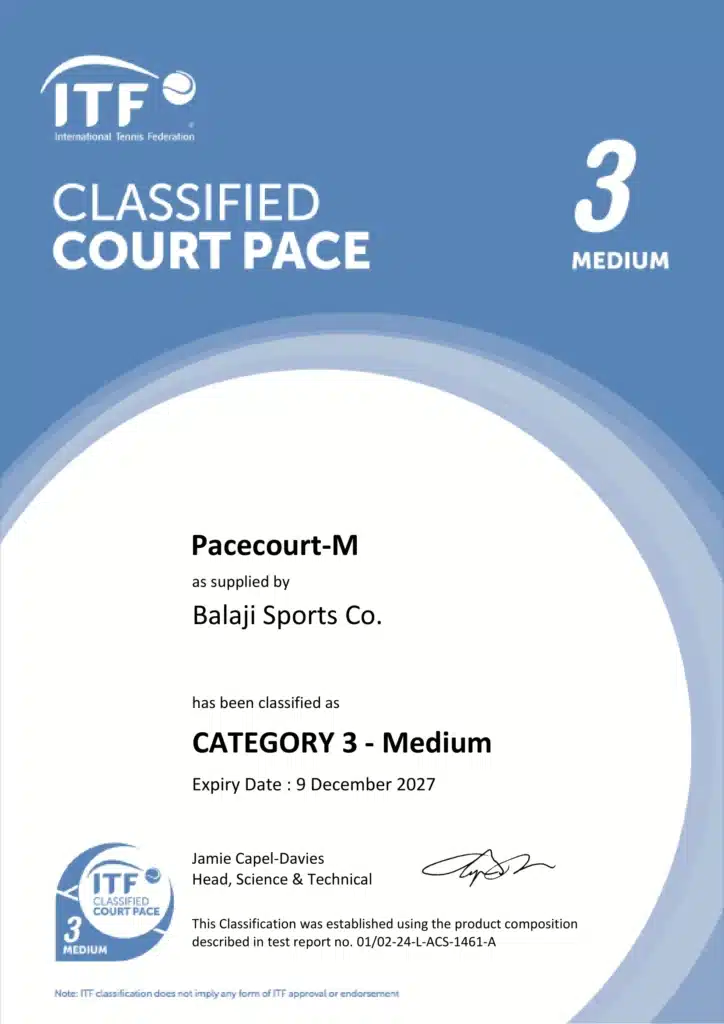How Tennis Court Dimensions Influence Gameplay Dynamics
Introduction Tennis demands an unparalleled blend of skill, strategy, and physical prowess all combined into one. It is therefore not unexpected that many people overlook one of its essential components: court size. Court size affects players’ movement patterns and choice of mechanisms, as well as the ability of the court to play games. The purpose of this post is to examine the impact of Tennis Court Dimensions on the dynamics of play on the court. Additionally, we will go over the benefits of acrylic flooring for outdoor tennis courts while providing examples from other pertinent cases. Understanding Standard Tennis Court Dimensions The dimensions of standard tennis courts Dimensions for singles matches are 78 feet long and 27 feet wide. But in doubles matches, the width goes up to 36 feet. At the center of the court stands a net that splits it into two equal parts and measures 3 feet high. Serving areas found on either side of the net, and they measure 21 feet deep and 13.5 feet wide. These tennis court measurements are not just random numbers; they specifically constructed to make sure that there is equity among players with different skill sets. Tennis court dimensions affect game tempo and style, the selection of shots, as well as the movement patterns adopted by players. How Dimensions Influence Gameplay Court Size and Player Movement To an extent, players should traverse a considerable distance to the tennis court, as it is vast. Hence, they are required to be fast and agile and to have stamina. To get the shots and preserve rallies, players need to change their location either sideways, frontally, or behind the doors. Shot Selection and Strategy The dimensions of the court typically have an impact on hitting a decision. For example, with lots of space, they may hit wide-angle strokes or lobs far away from the net more easily on this kind of surface, such as in doubles matches. However, in singles matches, players frequently use direct kill shots, regardless of the distance they wish to go, to trap their opponents at one of the two opposing ends, slicing off enough space to allow any player to cross. Net Play Netplay is influenced by both its height and its position. Players need to have accurate volleys and overheads in order to be successful at the net, which is often hard to do without a lot of practice because of the net’s height. Service Dynamics The size of the service boxes has the biggest impact on the serving approach. As a result, the players can hone their serves to become more forceful and accurate, which will help them win more points. Because of this, multiple server placements and speeds required to create variations in service placements and speeds. The Role of Acrylic Flooring in Enhancing Gameplay The rise in the use of acrylic flooring for tennis courts stems from its long-lasting nature, easy upkeep, and beautiful looks. It also offers an even playing area, which makes playing more interesting. This is how acrylic flooring affects the sport: Consistency and Reliability The homogeneous texture of the acrylic playing surface ensures even and consistent ball bounce as well as speed. As a result, players may develop and master their abilities without having to compensate for the uneven surface. Traction and Safety As we all know, the non-slippery finish of acrylic flooring is great for providing grip and friction to prevent any chances of slipping and falling. It is imperative, especially when playing tennis, which involves many sudden moves. Weather Resistance Acrylic surfaces withstand weathering and ultraviolet rays, remaining intact and looking good over time. Thus, they are perfect for outdoor courts where they are exposed to these elements. Aesthetic Appeal The game is played on a court that can appeal to the eyes by utilizing brightly colored acrylics. The use of bright colors makes them more welcoming to players and fans. The Impact of Court Dimensions on Different Playing Styles Baseline Players An individual who enjoys playing from the baseline utilizes strong groundstrokes with an ability to endure. The court’s dimensions enable them to use deep shots that penetrate deeply so that their opponents remain under pressure. Serve-and-Volley Players These guys serve this ball, so they may dash straight to the net. The size of a tennis court affects approach shots and volleys, which need to be timed and placed exactly right to be effective. All-Court Players To take advantage of the course dimensions in all of the styles. Players need to understand how to shift between baseline and net play. Their groundstrokes, volleys, and lobs make sure that their opponents are left guessing and scrambling to keep their balance. Case Studies Case Study: Upgrading a Public Park Tennis Court To improve the playing experience for the local community, the Delhi Public Park decided to upgrade its aging tennis courts. They opted for acrylic floors, understanding their advantages over the court’s performance and resilience. Project Overview: The Process: Initially, the project started with taking off the old broken surface. A primer was then put on the prepared and leveled surface for strong adhesion. This was followed by multiple layers of acrylic coating, which yielded a smooth and long-lasting finish. Finally, markings of official dimensions were made on the courts so that they could agree with the required standards. Results: The enhanced courts received high satisfaction rates from the locals. The players acknowledged the better grip and even ball bounce that significantly improved their play. Additionally, the bright color of the new surface made those courts more attractive, hence increasing their utilization. Case Study: Enhancing a University’s Tennis Facilities Tennis facilities at a university in Chennai need to be improved for its expanding tennis program. The management chose to invest in acrylic flooring for their outdoor courts to provide students and athletes with a good playing surface. Project Overview: The Process: The courts that already built in the community were thoroughly cleaned before the cracks had repaired. To ensure a





